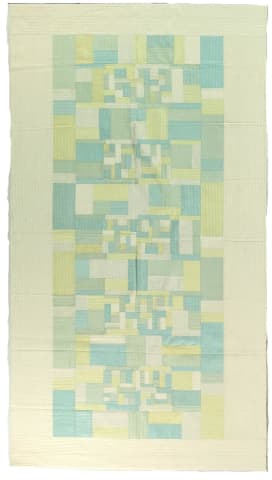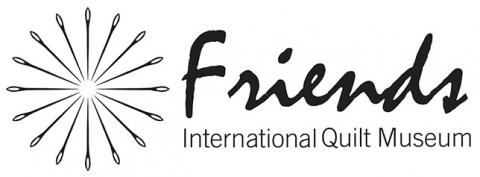Quilted Pojagi
Quilted Pojagi
Dated 1958
Seoul, Korea
2004.014.0001
Pojagi are Korean "wrapping cloths." In many countries, particularly in Asia, cultural traditions call for the use of beautiful cloth to wrap objects. In Korean culture, these wrappings have been and continue to be made in bursts of colorful patchwork or imaginative embroidery, in fine and coarse materials, and from small to large scale.
Pojagi had many uses. They served to cover, wrap, store, and carry objects in the common activities of daily life. They were made as tablecloths, to cover food, to wrap wedding gifts, to carry possessions on a journey, and to adorn and protect sacred writings. Women used wrapping cloths filled with cotton batting and quilted to wrap fragile objects or to cover food to keep it hot. Pojagi also had special uses in elaborate betrothal and marriage customs and in religious devotional rituals.
This month's featured quilt is a quilted pojagi made by Soon Hee Kim. Mrs. Kim has taught, collected, and researched traditional Korean textile arts and traditional quiltmaking traditions from around the world for more than 45 years. Mrs. Kim has been recognized by the South Korean government for her work in preserving Korean culture. She pieced and quilted this quilt sometime between 1950 and 1960 as an item for her dowry. She donated it to the International Quilt Museum in 2004.
The fabrics in this piece are lustrous and lightweight silk fabrics. The image you see here is of the quilt top. It is constructed in the colors for spring. The back of this reversible quilt is also pieced, but in colors suitable for autumn. Thus this reversible, single-bed-sized quilt is suitable for use in both spring and fall.
















